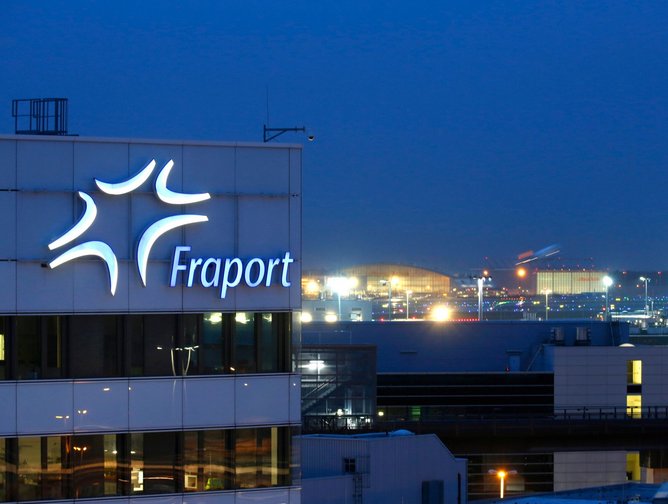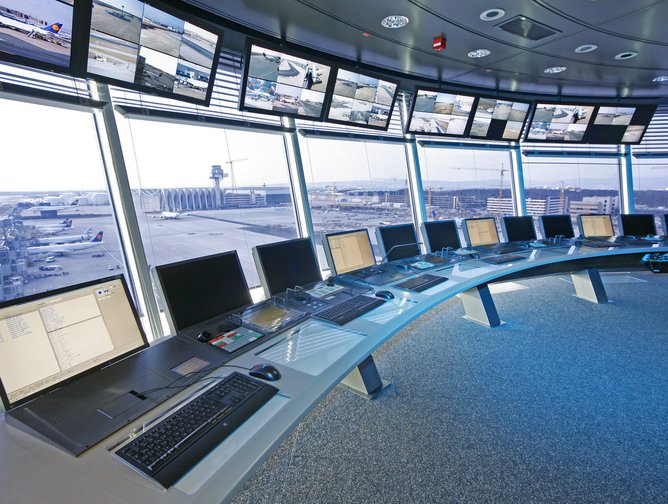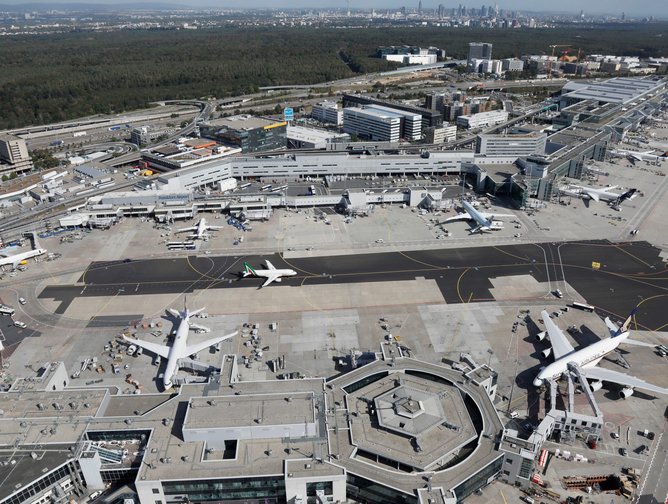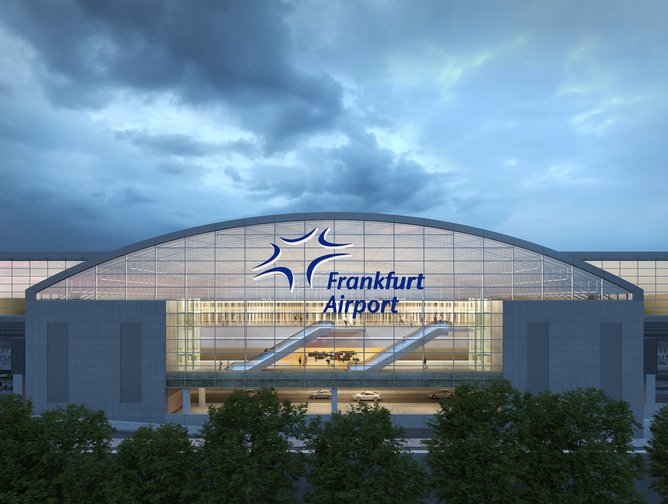Fraport AG meets airport demand with digital transformation
In the travel sector, whether operating as an airline provider or managing the terminal, there’s minimal room for error. Over the years, digital technologies have plugged airport gaps to make the experience of travelling as hassle-free as possible, while maintaining critical safety measures for both customers and staff.
With tight restrictions on high-traffic environments, airport operators face many challenges, including security, the tracking of clients in and out of airports for safety, consistency of maintenance at a rapid pace, and the logistics of boarding and departing aircraft, as well as consumer comfort.
Based out of Frankfurt, Germany, Fraport AG is one of the leading airport operators, commanding approximately 30 different sites across Europe, the Americas, and parts of Asia. The firm also possesses a 50% stake in multiple other airports, which together were responsible for around 182 million passengers in 2019 and 86 million in 2021. The group oversees the day-to-day processes from retail and hospitality—both in the air and on land—to maintenance and repair, ground handling of aircraft, and many other areas to ensure passenger satisfaction.
Across the airports that Fraport AG operates, it has applied more than 1,000 tech applications across the globe to guarantee a safe service delivery, particularly during the take-off and landing of aircraft. “In order to do this, you need a variety of systems from the management of the apron to make sure that all the starting and landing aircraft find the right positions, the right stand ‒ in order to let the passengers get out, to let the airports refuel and clean, load and unload the aircraft,” says Wolfgang Standhaft, Chief Information Officer at Fraport AG. “And at the same time, you have to make sure that there is no collision between the vehicles running around the airport.”
Standhaft also stresses the number of alternative activities that take place around the airport, such as the management and maintenance of more than 80,000 parking lots and thousands of digital devices within its ecosystems. These all require reliable, sophisticated IT solutions to be implemented before airports can begin optimising certain processes.
Updating legacy technologies creates airport flexibility
Like many players in the airport sector, Fraport has experienced a few unprecedented years ‒ ones that have been somewhat detrimental to its global operations. However, as reported by many other sectors, the silver lining of the past two years is that COVID-19 has only sped up the digital transformation process, which Standhaft states is one of the focal points for the organisation, post-COVID.
“We had to go to some saving rounds in terms of reducing cost and headcount. And we want to make sure that, moving into the future, we keep maximum flexibility due to all the uncertainties our time brings, in order to make sure that we maintain the highest level of operations moving forward,” Standhaft says.
He also explains how technical debt has influenced the company’s decision to adopt new technologies and set up IT solutions to migrate to the cloud. “Technical debt in our words means that many of the complex systems were developed 10 or sometimes 15 years ago, though, they were done from an IT standpoint in an on-premise development world, running in our own data centre and built on our own databases.”
“This means if we want to go for a more interactive setup of our systems and processes, for example, we can combine data for a comprehensive data assessment together with airlines or together with other partners on the cargoes. We have to face the fact that the environment that was used to develop many current systems now has to be transformed into state-of-the-art platforms.”
“In order to stay flexible, we decided to move to leading-edge technology. So we are working on 5G and actively exploring the internet of things (IoT). In particular, we are focusing in many areas on one of the technologies, which we internally define as a potential game-changer—artificial intelligence (AI).”
AI will play an important role in many of Fraport’s continued optimisation tasks, such as the distance and time for passengers between connecting flights, the use of monitoring tools to ensure that luggage makes it to its owner, and maintaining the flow of movements within the airport.
Standhaft says: “I think in the next five to 10 years, this will significantly change the shape of the whole application landscape, not only for our airports but also for the majority of airports around the world.”
AI will enable intuitive airport monitoring
Delving into some of Fraport’s current solutions, the company’s Frankfurt-based airport leverages intuitive systems for tracking baggage around the site and managing noise pollution through continuous monitoring activities. Standhaft provides two examples of how technology is currently operating in these areas.
“Like all the airports, we had a problem with the so-called left-behind index of baggage,” Standhaft says.
“We put something into our baggage handling system, which takes photos of all the luggage and is able to identify, for example, each black trolley during its journey. By doing so, we are able to monitor if some baggage is on its way to the wrong plane, redirect it, and make sure it catches the right train to the passenger.”
The second area of development was its noise monitoring system. “I know from colleagues all over the world that they have also had issues with noise monitoring,” says Standhaft.
Frankfurt airport is one that is surrounded by residential areas, which causes issues for the airport if not properly monitored and maintained. “It's our task as an airport operator to analyse the noise. Does it come from a truck passing by the house of this person? Is it an aeroplane which maybe creates too much noise? Or is it something else?” Such questions are the remit of the Frankfurt team when there are complaints from nearby residents.
To monitor noise across the Frankfurt site, Fraport has installed 40-something microphones and recording systems throughout the area. AI is responsible for continuously recording the data from the devices and maintaining a database of entries, which currently consists of some 500,000 noise cases.
“If this is done with a high rate of recognition by a machine, an algorithm like we implemented, it reduces the volume of work for staff so they can focus on the important things,” Standhaft explains. “We currently experience a correct recognition rate of +60% in an early stage of the project.”
Culture shift
Perhaps the sensitivity to noise is a result of a cultural shift, much like Fraport has witnessed as a result of COVID-19. He, meanwhile, has embraced the culture shift and stretches this across Fraport AG’s four key pillars within the IT department: strategy, organisation, enablement, and mindset.
Airports have also been influenced by consumers in that more contactless services are provided throughout airports to reflect COVID-reduction considerations. This is one of the areas in which Fraport is looking to develop its systems, having already experienced the benefits of using the internet of things (IoT) and AI to establish touchless services throughout airports.
“People do not want to touch surfaces unless it's absolutely necessary. So next to artificial intelligence, we are also working together with partners on biometrics to make travel through the airport as touchless as we can provide it.” This feeds into the company’s ‘mindset’ pillar, as it builds understanding of the needs of travellers ‒ particularly during the pandemic ‒ while also implementing solutions that adhere to any future changes or long-term mindset shifts. “Before the crisis, we hadn’t broadly dealt with artificial intelligence or biometrics, and now people in the organisation are keen on this approach, be it standalone or with partner solutions.”
Those who have travelled since the beginning of the pandemic will have experienced the ‘enablement’ aspect of the organisation’s digital transformation, especially through the use of IoT, as airports encourage the use of digital boarding passes, digital passenger locator documentation, and COVID-19 vaccination passes.
The group is also working closely with its staff on the ground to simplify the aircraft turnover process. “We are also in close collaboration with our colleagues and trying to support them when it comes to mobile devices to optimise, load and unload planes,” Standhaft says. Assessing the needs and the capacity of its team, Fraport takes into account the ‘organisation’ as a whole. Not only is the company developing solutions for its ground teams, but it has also made considerable changes to its working structure.
Digital transformation was accelerated at the onset of COVID-19 and employees were forced to work from home where possible, which is something that the company advocates as it now allows its teams to work flexibly.
A strategy for digital airport transformation
The final pillar that was mentioned by Standhaft was ‘strategy’. This is where all of the technical innovations come together for Fraport, along with a multitude of partnerships, including SAP, Microsoft, and other national and international partners.
Standhaft says: “We have well-established outsourcing partners we are working with, and we are currently in the process of setting up new ecosystems that we will roll out for international partners in the application arena where we have not focused before.” He also explains what the future looks like for the organisation, following the devastation of the pandemic.
“We are looking forward to forming this new ecosystem in order to get more support for the speedy rollout of new technology in the best interest of the airport.”
“We heavily reduced our headcount, and now we have to optimise our processes,” he says, as he discusses Fraport’s strategy for future airport development.
“It's about all the things we discussed so far: new technology, getting more agile, getting closer to the customer, but in order to focus on the main things, the key thing for airports is to ramp up after the crisis, which fortunately we’re already seeing in early-2022.”
Now, the industry is in a critical period of recovery; Fraport’s IT team is supporting its internal and external customers through digital transformation and allowing them to ramp up their operations, helping welcome more and more travellers at optimal capacity.
“The ramp-up is supported by everybody in the IT organisation. That means we have as many stable, well-running systems that we can provide, which supports the increasing number of passengers that we expect to see in the course of 2022.”






